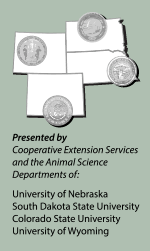Hydroxy Minerals Introduced
LOVELAND, Colo. (Nov. 18, 2015) — In conjunction with the 24th Range Beef Cow Symposium hosted Nov. 17-19 in Loveland, Colo., mineral feed ingredient manufacturer Micronutrients hosted a breakfast for cattle producers interested in learning about the company’s relatively new hydroxy trace mineral products. Micronutrients representative Jeff Heldt called hydroxyl trace minerals “unique” because of their crystalline structure.
According to Heldt, more traditional trace minerals used in animal feed have been categorized as either inorganic or organic. Chemically, inorganic minerals are the sulfates and oxides that make up a large majority of copper, zinc and manganese used in feed. Organics are mineral salts whose ligands (ions or molecules that bind to metal atoms) contain carbon. Held said the widely used sulfates are very soluble and reactive due to having weak, ionic bonds, and reactions undergone in the rumen may reduce mineral absorption in the lower gastrointestinal tract. Organic minerals have sometimes exhibited higher relative bioavailability due to having covalent bonds making them less reactive.
Heldt said the hydroxyl trace minerals are less reactive and will not bind with other ration ingredients. Thus the minerals are ‘protected’ in the rumen and more available for absorption in the lower tract. Heldt said hydroxy trace minerals are environmentally friendly and less subject to costly waste because they will not leech out after being mixed with feed or salt.

John Arthington
Also speaking during the breakfast was University of Florida ruminant nutritionist John Arthington, who explained how hydroxyl trace minerals had been used to help prepare calves nutritionally for weaning. Arthington said that while a calf’s mineral status is adequate at birth, it tends to decline thereafter, often leaving the animal mineral-deficient by weaning time. Typically, copper and selenium are most limiting in many areas.
“Mineral demand is high for a fast-growing calf,” explained Arthington. “Milk is only a marginal source of mineral elements and mineral intake from other sources may be inadequate, so a calf usually is deficient at weaning. It may even be mineral-deficient by 90 days of age.”
Arthington said calves from the research herd had been limit-fed a creep feed containing concentrated trace minerals in preparation for weaning, since the stress of weaning also contributes to mineral loss. However, due to poor palatability, calves would not readily eat creep feed containing traditional sulfate minerals. The problem was overcome by changing to a hydroxyl trace mineral formulation.
According to Arthington, an experiment evaluating calf acceptance of a salt-mineral mixture was conducted to compare hydroxyl trace mineral with the more traditional sulfate form. Over time, said Arthington, calves preferred the blend of salt and hydroxyl mineral, over salt blended with sulfate mineral.
Editor’s Note: This summary was written under contract or by staff of the Angus Journal®, which retains the copyright. To request to reprint this article, contact Shauna Rose Hermel, editor, at 816-383-5270. PowerPoints are posted with permission of the presenter and may not be reproduced in whole or in part without the express permission of the presenter. Angus Journal claims copyright to this web site as presented. We welcome educational venues and cattlemen to link to this site as a service to their audience.
The Angus Journal's coverage of the event is made possible through collaboration with the event committee and sponsorship of LiveAuctions.tv. For questions about this site, or to notify us of broken links, click here. Look for additional coverage in the Angus Journal, the Angus Beef Bulletin, the Angus Journal Daily, the Angus Beef Bulletin EXTRA and Angus TV.


